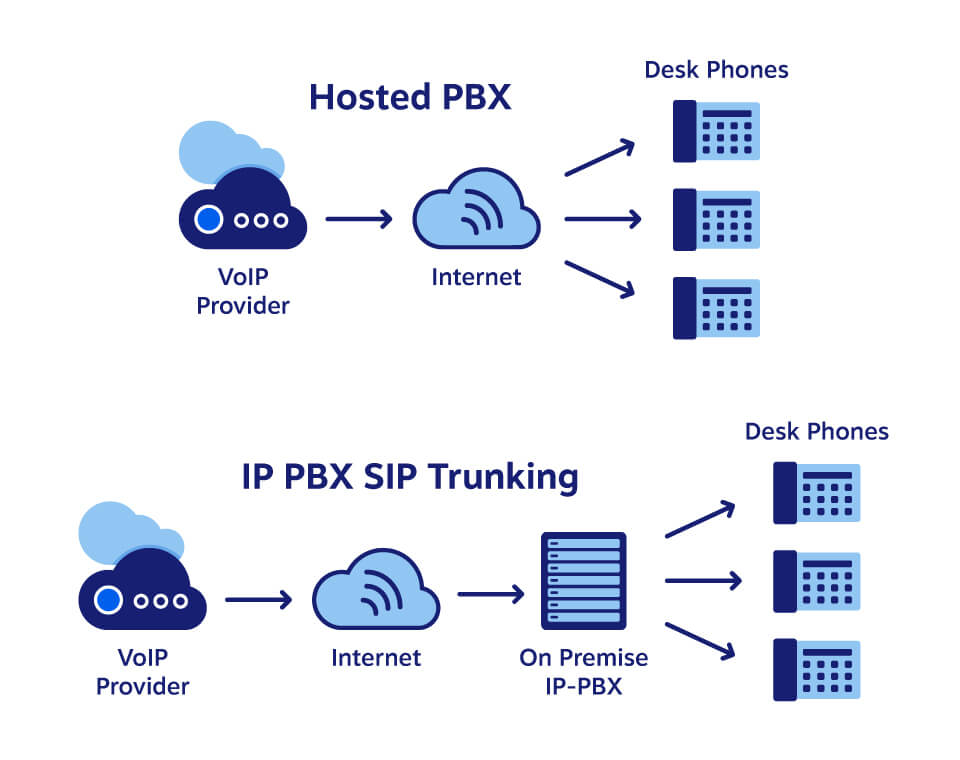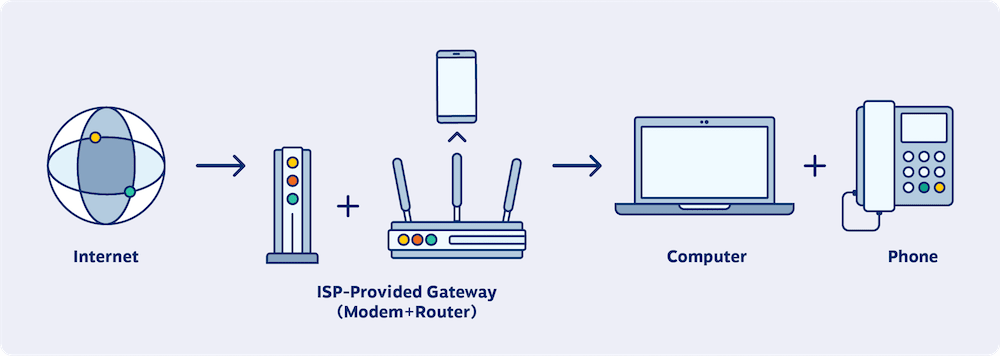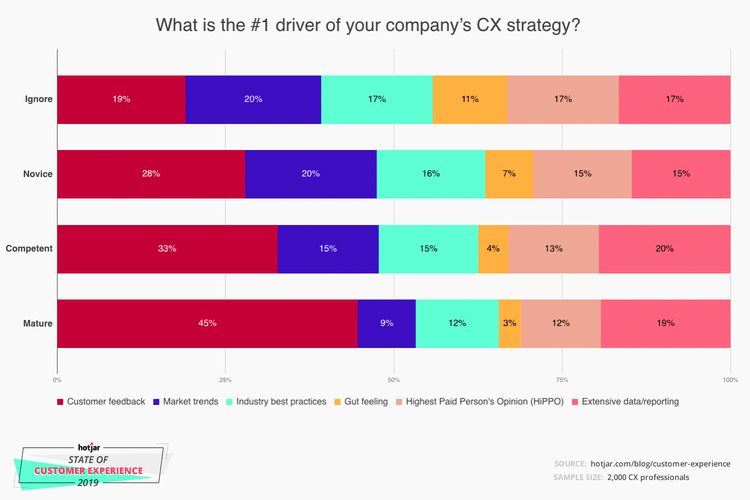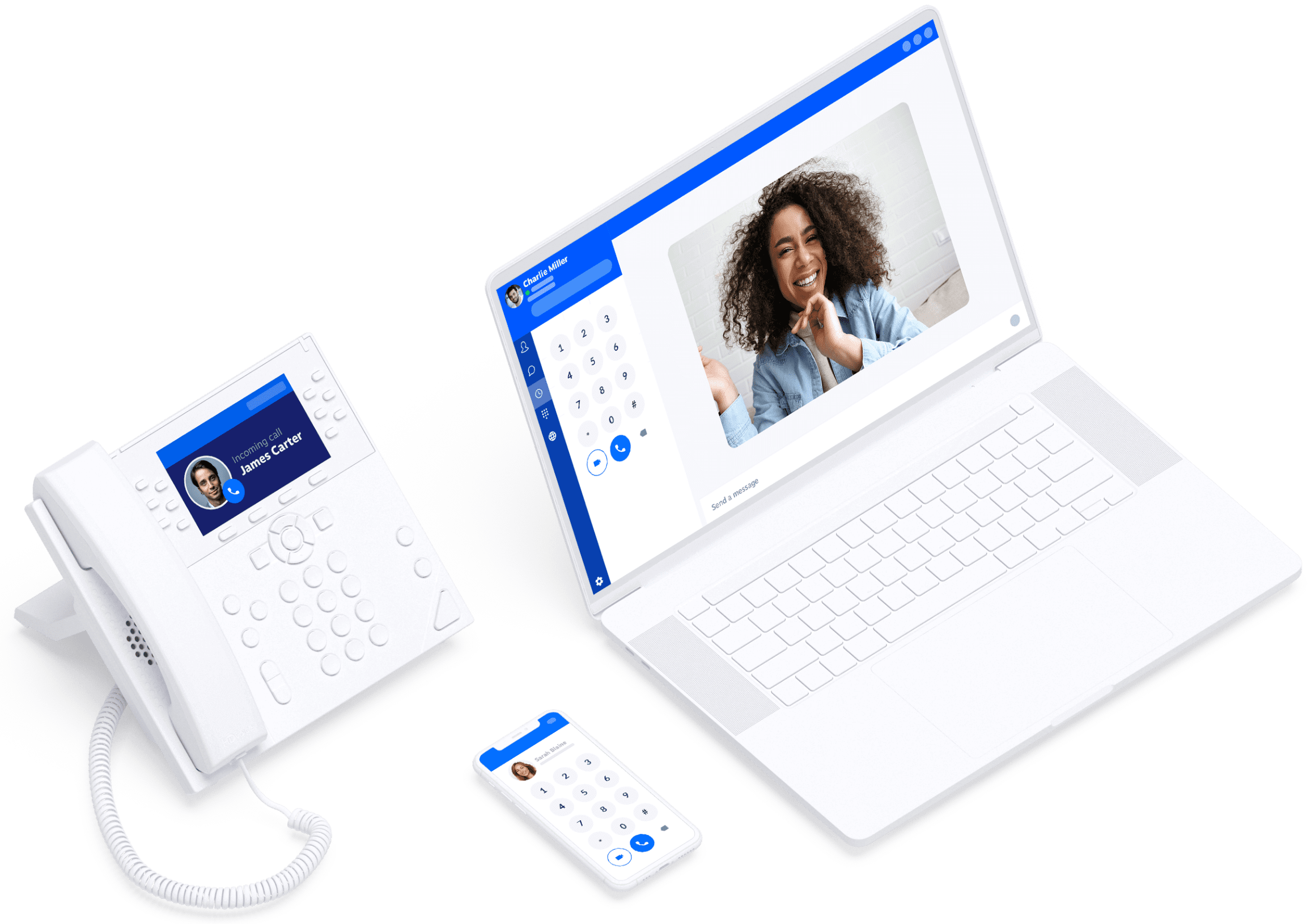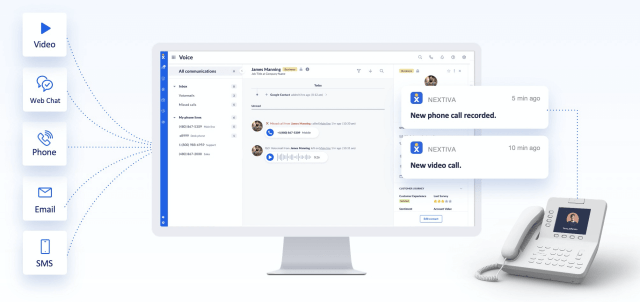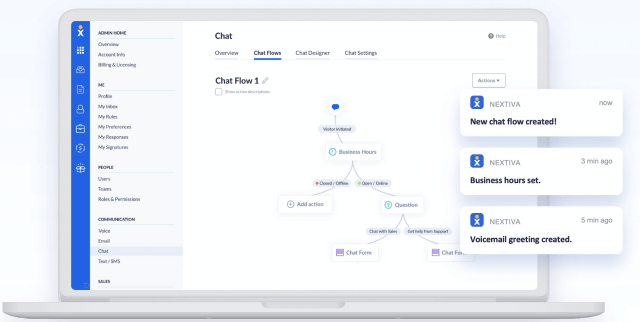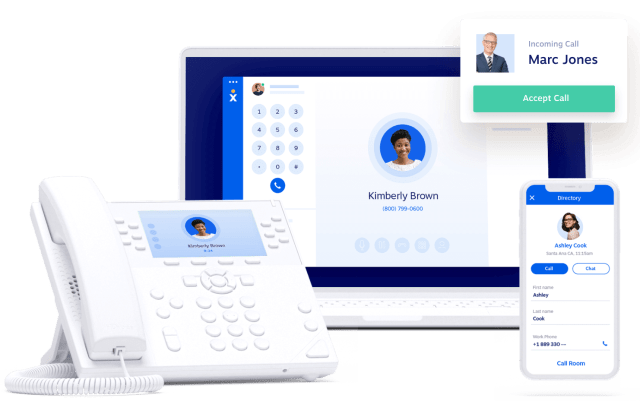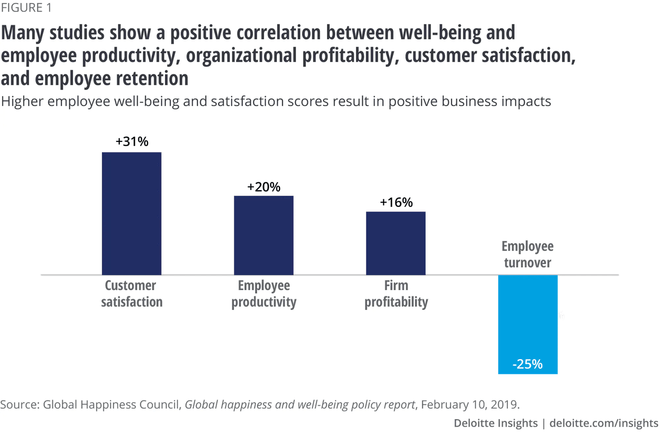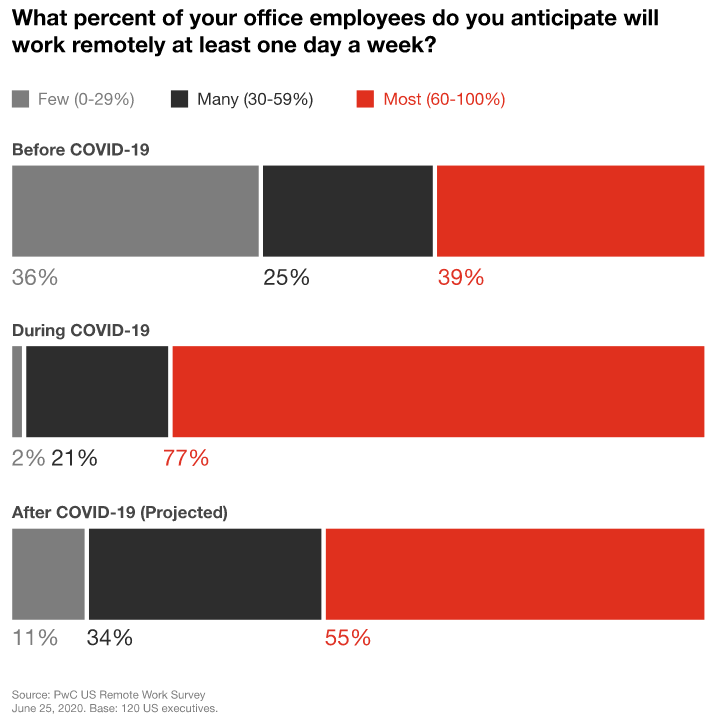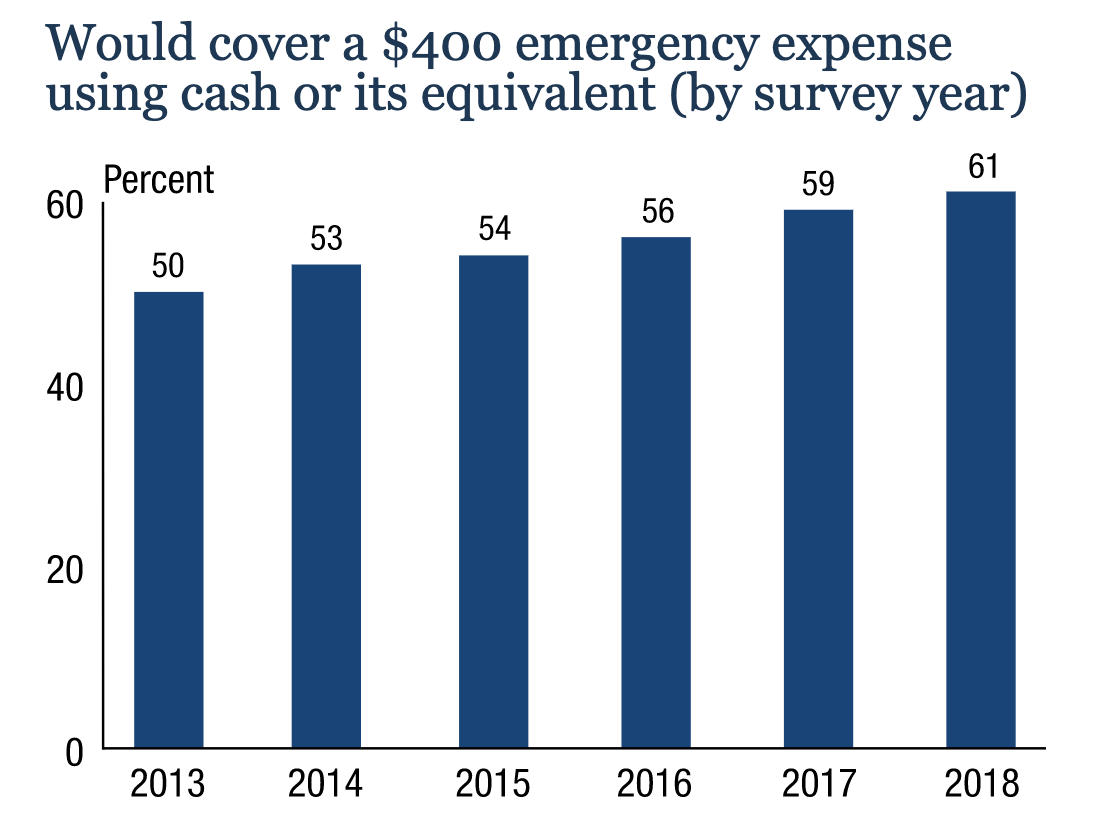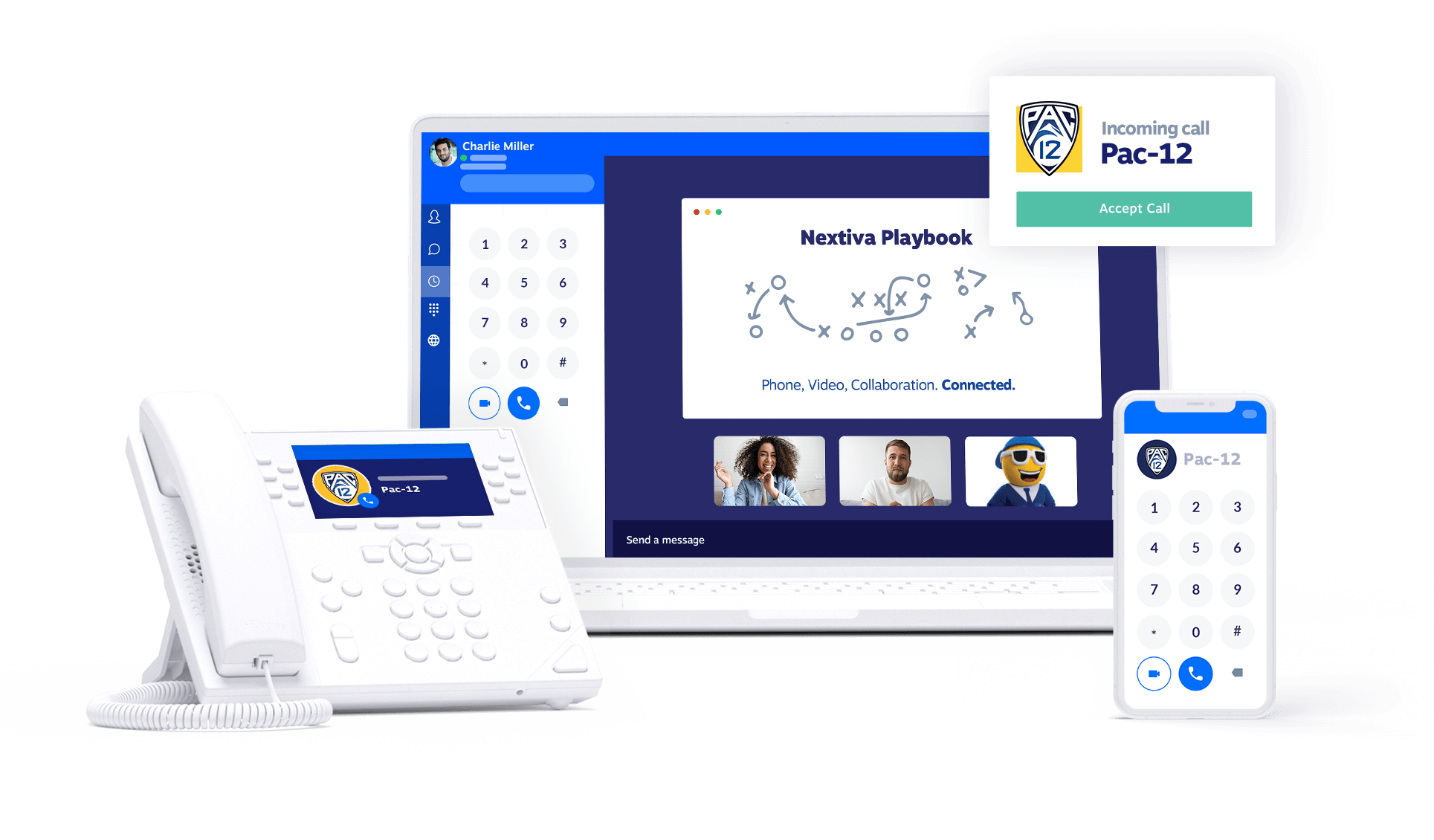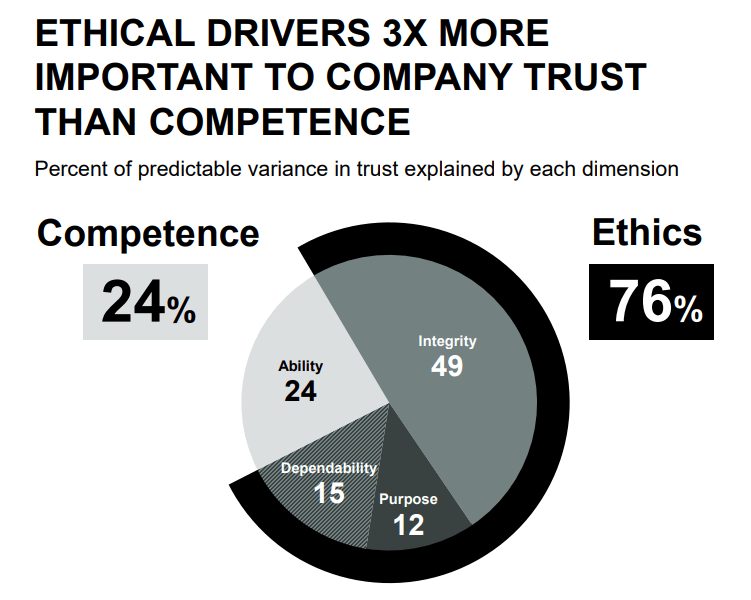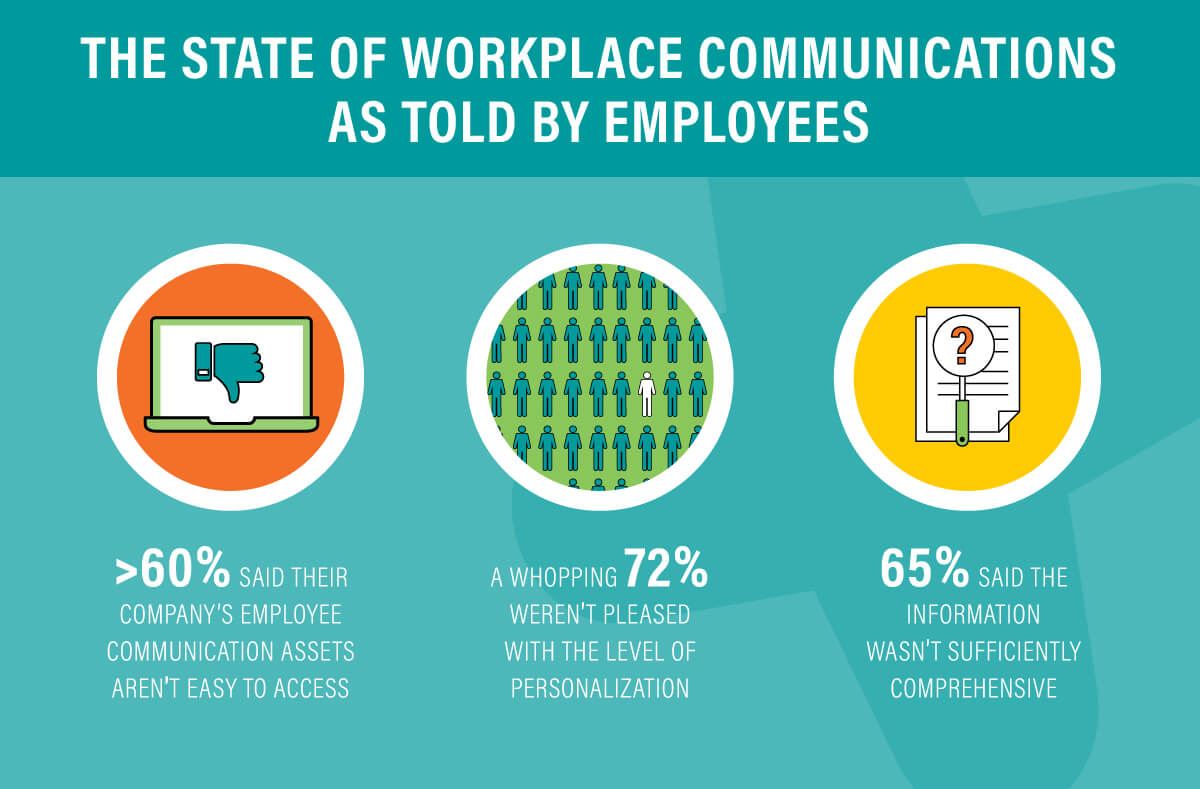We established the Nextiva Business Scholarship in late 2019 to support aspiring students pursuing fields in business, science, technology, engineering, arts, and mathematics — collectively known as STEAM.
All great innovations begin with provocative thinking. Scribing ideas onto paper (or a Word document) immortalizes them. They kick in the door of the status quo with engaging ideas and compelling arguments. It’s in this spirit that Nextiva has grown from an internet phone service, to a full-featured cloud communications platform.
For the application essay, we asked students to respond to one of three prompts around STEAM and business communications:
- What are ways that a business can give back to the STEAM community?
- Is the fragmentation of communication apps a good thing?
- What are the biggest opportunities in today’s state of business communications?
We received hundreds of essay submissions, and it was a grueling process to select the top five essays — all of them were genuinely amazing.
With no further ado, here are the winners along with their essays.
2021 Nextiva Business Scholarship Recipients
Winners receive $1,000 paid directly to their college or university as well as public recognition for inspiring us to support them in their academic journey.
Jae Hun Hwang — Pasadena City College
 We live in a society where information is one of the fundamental factors to development and innovation that will transcend the human race to a new era. To obtain information, people use communication software to exchange facts and ideas that will mutually benefit one another.
We live in a society where information is one of the fundamental factors to development and innovation that will transcend the human race to a new era. To obtain information, people use communication software to exchange facts and ideas that will mutually benefit one another.
From painting cave walls, we have evolved as humans to new technologies. We now share information with others through hundreds of different communication apps, such as Messenger, Snapchat, and Instagram. This communication happening across a multitude of applications and services that aren’t integrated is called fragmented communication. I believe that it is difficult to decide if the fragmentation of communication is a good or bad thing because of the complexity involving its pros and cons. Thus, we must look towards improving the dispersion of communications across different services.
If fragmented communication exists, there must be benefits to the people that still use it in their daily lives. One benefit of having different apps to communicate on is that there are various functions within each app. Functions such as video calls do not exist in emails, and the function to forward the message does not exist in direct messages. By having different functions, people build preferences as they decide which app or communication method is more effective and comfortable for them. Another benefit of having options to broaden widespread communication is that one can reach out to more people. Snapchat is predominantly used by teens and Facebook by adults and elders. The use of multiple apps allows one to maintain their connections with people of all ages. Beyond personal preferences and social connections, hundreds of apps launching for communication purposes promote competition in the communication market, which encourages app creators to improve their products or to invent new communication technology to be at the top of the survival chain of marketing. Through fragmented communication, each benefits from having more options to choose from as they explore their most efficient way to communicate with others and broaden their connections.
However, there are some flaws in fragmented communications that can potentially go against the thought of technology bringing convenience to us. One disadvantage of having too many options to communicate is that people have to check more apps, which subsequently means more wasted time because these communication apps cannot share the same interface. Not only will time be wasted, but there will also be wasted opportunities from focusing on everyone else’s communication preferences. Another disadvantage is that with more apps to store information, it will be harder to find them later. Beyond personal consequences, dispersed communications can potentially hurt businesses. With employees contacting customers through shadow communications, which means users are using tools outside of those provided to communicate with one another, it will endanger the business’s collective knowledge as the contact with the customer will be lost if the employee quits or gets removed from work. Having more options to pick from and using several apps to communicate can be a tedious task and be a way to easily lose track of valuable information.
The complexity yet convenience of fragmented communication makes it difficult to call “good” or “bad.” It is, put in simple words, an absolute mixture of both. How can we make fragmented communication the “good” we optimize it to be? One simple way to improve communication would be to have someone buy all the communication services and unify them into one service, but in reality, this would be too far-fetched. The best way would be to bring the fragmented pieces and bring them together like a puzzle.
Puzzles are already matched when they are made. They are then disassembled when put in the container to sell. If the puzzle is fragmented, it can be “defragmented.” When it comes to “defragging” communications, we can use a source or product to help us. The majority of people (5 billion people) have mobile phones. Half of these are smartphones. We can program smartphones with communication apps to interconnect all our contacts across all the apps. If we just type or tell the phone who to contact, it could show what the person uses to communicate. We can further program the phone to go to the app that the person uses the most often. This is how a product like mobile phones can integrate all the communication apps on our phones.
Furthermore, when it comes to endangering collective knowledge with fragmented communications, we can fix it by having the employee applicant sign a contract to participate in collective knowledge before employing them. This would prevent the company from losing contact with a customer when an employee contacts through shadow comms if the employee quits or gets fired. Just like several distinct kingdoms are unified by royalty in the United Kingdom, fragmented communication can be unified by mobile phones.
By looking at the good and the bad about a product or idea, there is always room for improvement. This is why I see in the future, and I believe that it will be good as we improve day by day. Communication is an important management function closely associated with all other managerial functions. It bridges the gap between individuals and groups through the flow of information between them. Effective communication is one of the most important traits to being successful in business and daily life. We as humans are relational beings, born to communicate.
Daniel Cummins — Juniata College
 The fragmentation of communication apps is ultimately a good thing, despite introducing some short-term problems. Communication providers are becoming better at maintaining and improving their services, thus spurring greater employee productivity and connectedness while also providing customizability.
The fragmentation of communication apps is ultimately a good thing, despite introducing some short-term problems. Communication providers are becoming better at maintaining and improving their services, thus spurring greater employee productivity and connectedness while also providing customizability.
As Brett Brody mentioned in a recent article published in Medium, “69% of workers waste up to 60 minutes a day navigating between apps.” However, this figure fails to consider the increase in workers’ productivity enabled to utilize simplified, less feature-packed applications tailored towards more specific purposes. The very “fragments” that the differentiated market provides enable workers to construct their mosaic of communication programs that best works for them, thereby giving them the tools to communicate effectively, clearly, and comfortably.
The problems of incompatibility between certain fragmented apps and their supposed involvement in only a small part of the content lifecycle, if viewed in the right way, manifest not as problems. They become advantages in building a custom toolkit of applicable programs for workplace productivity. If a company condensed all of the features seen in various fragmented communication apps into a single app that all workers were required to use, no one would be driven to customize any part of their communication process.
By contrast, fragmented apps are also differentiated apps. Workers can choose programs with different aesthetics, functionalities, and overall compatibility with their network of other apps. The market of specialized products that app fragmentation creates fosters greater individual productivity by eliminating any semblance of a “one-size-fits-all” mentality and instead of providing accommodations to focus on each worker’s individual needs.
So if app fragmentation itself is not causing workplace productivity problems, then what is?
After researching this subject, I have concluded that company policy is to blame. The seeming decrease in connectedness and ease of work that app fragmentation has accompanied is due to inept business policies regarding the use of these apps and failure to standardize use among employees. Just as employees are empowered to customize their workspace through specialized programs in the current market, so too are companies empowered to decide which programs their employees will use and establish a connected, compatible ecosystem of productivity and communication apps.
The horror stories of document repositories, hundreds of chat rooms, and email hell pop up when “app fragmentation” is typed into Google are symptoms of the unwillingness or inability of company administration to standardize app use among employees and use fragmented programs to their full potential as a customization tool.
For instance, if a company desires complete interconnectedness among its employees, processes, and communication apps, company administration could mandate that all employees use apps within Google’s interface. However, if a company has different needs because of app fragmentation, they are not limited to Google and could instead choose to use Microsoft’s business suite.
Interestingly, even these families of products are not mutually exclusive. As a result of communication app fragmentation, companies can use Microsoft for email and Google for small-group project formation and planning. This opportunity could not exist outside of a fragmented consumer program ecosystem.
Companies themselves can also implement creative solutions to app dissonance by compiling apps used for proprietary and general processes in a central location.
When used correctly, the fragmentation of communication apps can serve as a great asset to companies and individuals due to the specialization and customizability it offers. Through careful processes and clever policies, companies can reap its benefits without experiencing its supposed disadvantages.
Daniela Valdez — Cornell University
 In a world run by consumerism, the power a successful business holds can bring about an era of enlightenment. Giving back to the STEM community can range from funding research and projects to creating partnerships to educate the public. The best way a business can give back to the STEM community is by promoting its work, complexity, environment, and ideas.
In a world run by consumerism, the power a successful business holds can bring about an era of enlightenment. Giving back to the STEM community can range from funding research and projects to creating partnerships to educate the public. The best way a business can give back to the STEM community is by promoting its work, complexity, environment, and ideas.
As someone interested in the engineering portion of STEM, I am distraught to know that only 20 percent of women represent this community. Furthermore, about 47 percent of employed engineers are white males. This means that half of all engineering decisions, innovations, consultations, and changes are steered to the liking of only one type of social group. This lack of diversity in engineering fields can be changed by the power that a business holds.
Before the beginning of the 2020 football season, the Washington Redskins were pressured by sponsors into changing their racially controversial name. Before these businesses got involved in pressuring the football team’s name change, the owners had said that they would never do such a thing, even if it meant going against many of their fans. This shows you the power a business holds upon others. As of today, the Washington Redskins new name is the Washington Football team. Apart from changing their name, they also changed their logo and erased the previous affiliation to the racially controversial name. As I said before, a business has the power to start an era of enlightenment. Much in the same way businesses pressured a football team to get rid of its controversial name, they can give back to the STEM community by diversifying it in gender and race.
If a business is sponsoring a STEM-related research project, the business can demand the hiring of more qualified women and people of color. A business can start at the root of a problem and even create programs or fundraisers to promote STEM education in local high schools and middle schools. Even small local businesses can take part in this change.
If you package food in specialized food containers, you can create a label that states, “A materials engineer helped develop this type of plastic, you can be a materials engineer as well.” A teenage girl can then come across this label and become interested in a field she never thought about before.
Businesses helping diversify the STEM community do not harm the STEM community. The new demographics of people coming into the STEM community will bring new ideas to the table, and those ideas can turn into the future of tomorrow. A brown girl from the suburbs of Chicago can be the leading scientist to discover a new way of creating solar panels to maximize efficiency. An Asian boy from Wisconsin can be the next Stephen Hawking. The creations and innovations accomplished by people in the STEM community end up being sold and marketed by businesses. A diversified STEM community created with businesses’ help will just end up helping businesses in the end.
A diversified STEM community brings upon a new range of ideas. A new range of ideas brings upon a new range of products, and these products bring upon new businesses. The intertwined relationship between STEM and businesses is a cycle that eventually ends up benefiting everyone involved. A business has the power to give back to the STEM community by leading and promoting it on the right track. Accountability is key, and the pressure a business can apply to others is the future of this generation. A diversified STEM community being held accountable by a business is a blessing in disguise.
Samuel Dage — Missouri University of Science and Technology
 One of the greatest assets to the modern era is the STEAM community, which prepares themselves to be scientists, engineers, and mathematicians. While there are plenty of teenagers and young adults who are on a steady path to achieve their goals, many have difficulties because their school is in a poor financial situation. Businesses have a calling to provide assistance and give back to keep minds sharp and to inspire younger generations to participate in the STEAM community.
One of the greatest assets to the modern era is the STEAM community, which prepares themselves to be scientists, engineers, and mathematicians. While there are plenty of teenagers and young adults who are on a steady path to achieve their goals, many have difficulties because their school is in a poor financial situation. Businesses have a calling to provide assistance and give back to keep minds sharp and to inspire younger generations to participate in the STEAM community.
The best ways for businesses to give back to the STEAM community is to provide financial assistance to aspiring young people and schools with talent, mentor students at high schools with underfunded STEM programs, or sponsor or run STEAM events for students.
One of the main reasons many bright individuals interested in careers in STEAM fields don’t prepare for them is that their school lacks a rigorous curriculum or is financially disadvantaged. While Nextiva’s scholarship program offers students extra money that significantly helps those who receive it, the scholarship won’t cover the cost for most in a tough situation. I propose to create paid internships or co-ops with universities that allow students to earn money and valuable work experience remotely.
While this isn’t an entirely new idea, remote internships are becoming a more appealing option to provide students with assistance rather than throwing money at them. With the COVID-19 pandemic still causing mayhem as cases rise in the U.S., this type of position would allow aspiring young members in the STEAM community to safely gain work experience and money that will benefit their chances of success in college.
At the end of my senior year in high school, I had conversations with my high school engineering teacher about the program’s future. He mentioned Facebook was building an office in my hometown that assisted the school’s engineering program. While at first, they offered to help financially, he told them that the most valuable service Facebook could offer was to work with the students directly and provide feedback on their work. I believe that all businesses that rely on those in the STEAM community should follow this advice to foster growth in the next generation. Experienced employees of respected companies can mentor by working directly with the students on their projects and giving them an invaluable perspective from the world that they will one day join. Any company can send a person to stand on a stage and talk or host a conference or event. Going to the students shows the community and the students that the company cares enough to mentor them in their projects and design teams.
Hosting events for those interested in STEAM fields is nothing new for Nextiva as the company has hosted NextCon and sponsored the Southwest Human Development MAKERS of Change event. However, one of the organizations that would greatly benefit from businesses’ support is TSA (Technology Student Association). This organization hosts a national conference where tens of thousands of high school students compete in STEM-related competitions. The main areas where the organization could use help are in the states where the TSA chapters are relatively weak and need companies’ support. Looking at the national conferences, most of the time, Texas, Florida, Georgia, and Pennsylvania take the top spots because their state conferences are a lot more competitive than most other state delegations.
Companies that level the playing field by sponsoring and providing assistance in these states ultimately become more competitive. In addition, more students across the country would gain recognition on the national stage and jumpstart their careers.
Eva Stanley — University of Maryland, Baltimore County
 Using a messaging app, video app, or social media, anyone can easily connect and communicate with people from around the world. However, as more people use certain apps and companies generate more profit, others create and market similar apps, fragmenting how society communicates. The fragmentation of communication apps inspires unoriginality, amplifies biased information, and creates overall societal divides.
Using a messaging app, video app, or social media, anyone can easily connect and communicate with people from around the world. However, as more people use certain apps and companies generate more profit, others create and market similar apps, fragmenting how society communicates. The fragmentation of communication apps inspires unoriginality, amplifies biased information, and creates overall societal divides.
The numerous options concerning communication apps mean that these apps are no longer original. Multiple competitors are continually trying to get the most users and engagement from their specific app. When a designer comes up with an idea to make a new communication platform, the idea tends to pop up in other apps. For example, recently, Instagram added a Reels feature that mimics TikTok, a rivaling video social sharing platform. Although one could claim that this feature is just a small change, this format is nothing new and does not help Instagram stand out. An earlier scenario is when Facebook and Instagram debuted their Stories feature, similar to the one Snapchat had pioneered. Although consumers may like having these new updates to the apps they already use, the updates are not improving anything. Instead of putting time and effort into designing new ways to communicate, these apps copy features off of each other in an attempt to stay competitive. The fragmentation of communication apps has slowed progress in creating new communication methods, which is not a beneficial thing.
Because of the volume of communication apps, it is rare for everyone who uses communication apps to use each app equally. This imbalance means that information shared on a specific app will not reach everyone who uses communication apps in general. This consequence of the fragmentation of communication apps means that these apps’ information and news may exist in “filter bubbles.” Filter bubbles occur when algorithms based on previous user data predict and display information the algorithm determines a user will enjoy. When someone interacts with specific content or platform features, the social network will surface similar content to users.
The exposure to narrow viewpoints amplifies the prevalence of certain beliefs, which can create and reinforce biases. Although these beliefs are present on various communication platforms, different apps have given other people platforms to gravitate towards depending on their ideas. The fragmentation of these apps has worsened these existing biases and has negatively impacted how people have chosen to communicate.
Besides the biases worsened by different communication apps, the wide variety of communication apps has worsened communication efficiency. For example, in this time of digital learning, students may use at least three different apps just to have video-based communication. The variety in the apps on the market means that it is harder to track what is going on concerning separate platforms. When things are harder to keep track of, using them is impacted, and efficiency goes down. Additionally, the number of apps available means that some people will form preferences for specific apps. As people gravitate towards apps and stereotypes are formed about the app’s users, broader societal divides could occur. Fragmentation of communication apps has worsened the efficiency meant for these apps.
Although someone could agree that communication apps’ fragmentation has had unintended consequences, there may not be agreement that this is a bad thing. Throughout history, people have tried to make communication easier, whether through telegram, the phone, email, and now communication apps. These innovations wanted to bring people together and close the gap connecting a person and someone else far away. However, there are too many methods of communicating for each person to use, which worsens the communication gap. It is not a good thing for apps to fall short of what they were trying to do in this way.
Even though the fragmentation of communication apps was inevitable, it is not necessarily a good thing. The unoriginality, media biases, and social divides have worsened due to the many channels people use to communicate with others.
The winner’s submissions have been edited for clarity and formatting.
Related: Nextiva Becomes the Official Communications Partner of the Pac-12


![10 Common VoIP Myths & Misconceptions Debunked [Infographic]](https://www.nextiva.com/blog/wp-content/uploads/sites/2/2021/02/voip-myths-facts.jpg?w=640)



